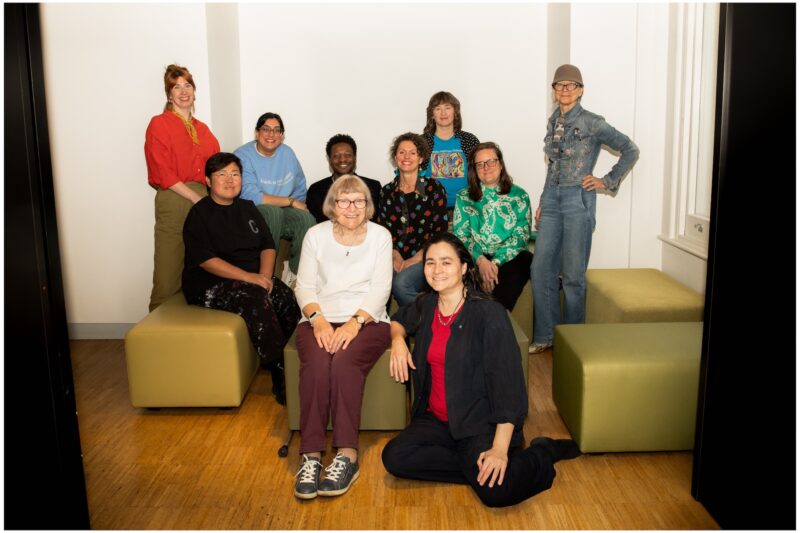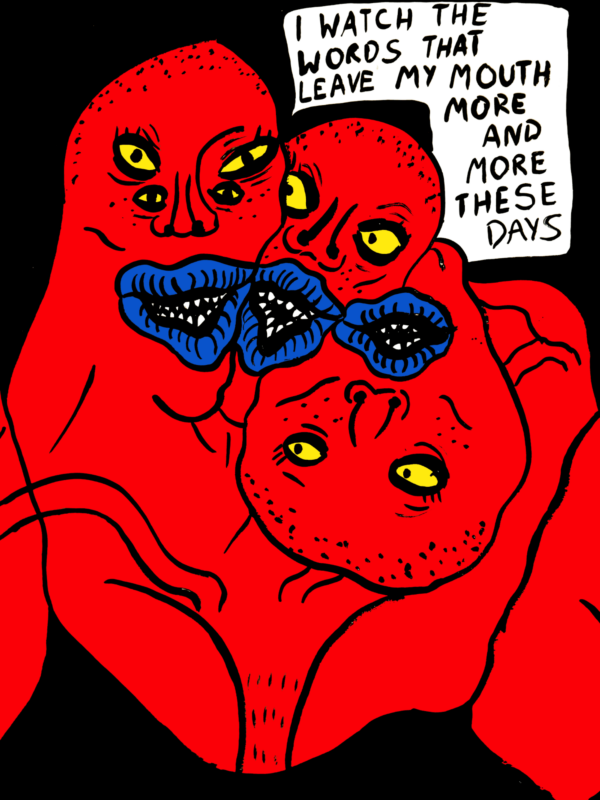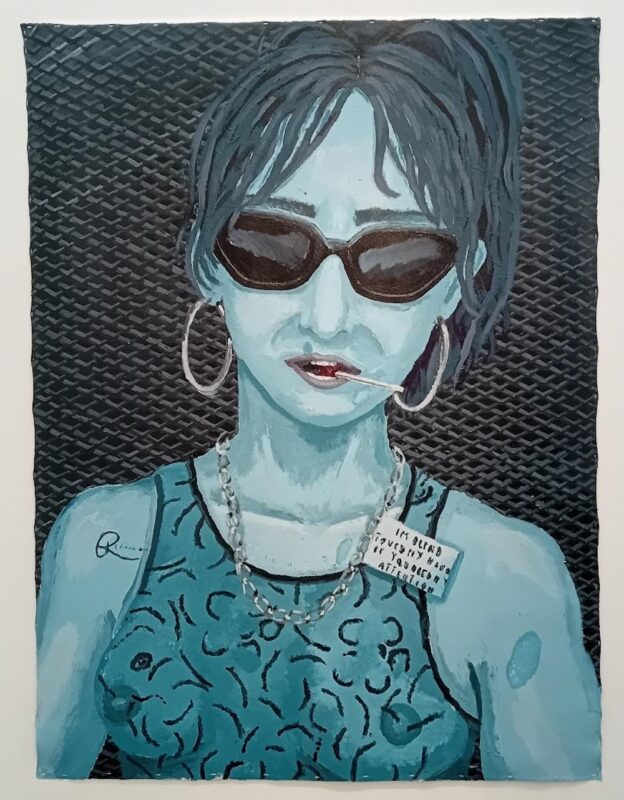Serpentine has opened its first solo exhibition of Georg Baselitz (born 1938 in Deutschbaselitz, Saxony). It includes a series of sculptures and drawings as well as a monumental nine-metre-tall sculpture Zero Dom (Zero Dome) within the Royal Parks, presented for the first time in the UK.
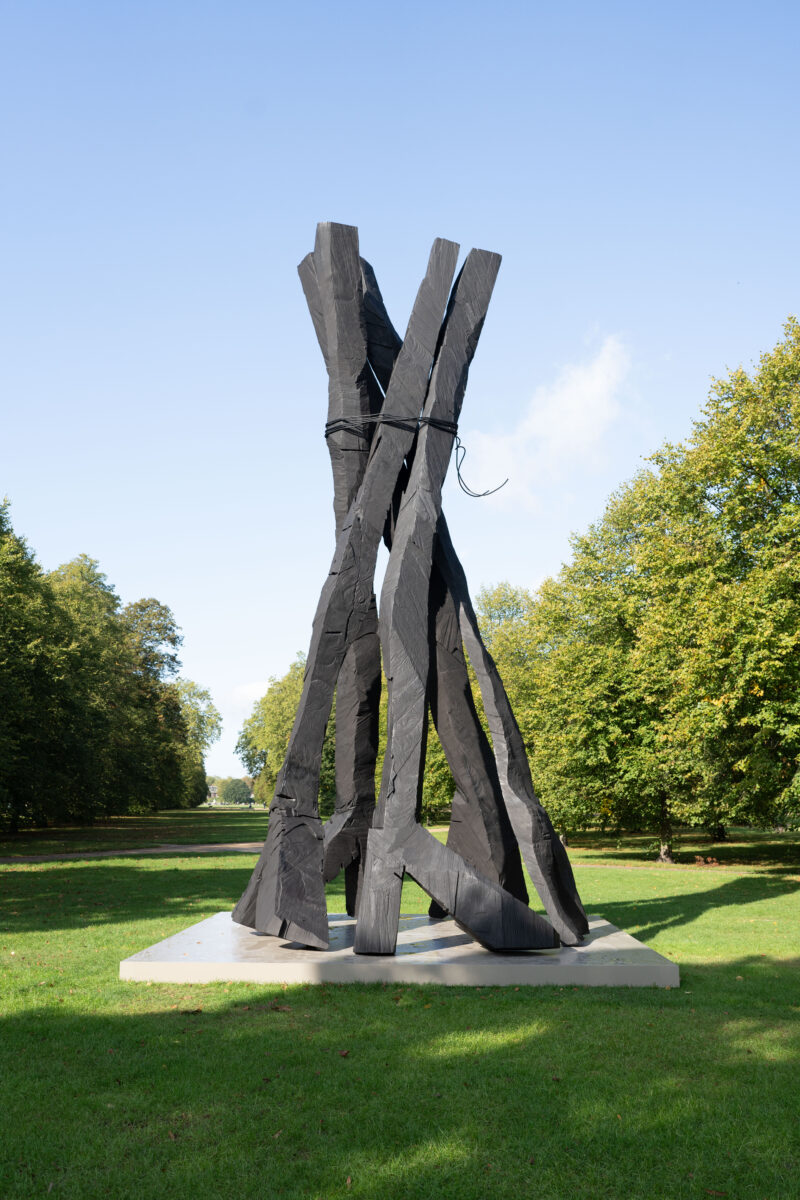
These pieces offer an intimate glimpse into the artist’s studio practice and explore the frailty of the body in relation to the highly physical and raw processes he employs to make the works.
The exhibition follows a long history of presenting sculpture inside its galleries and in the park including major shows of Henry Moore (1978), Anthony Caro (1984), Louise Bourgeois (1985, her first in a UK institution), Alberto Giacometti and more recently Nairy Baghramian and Phyllida Barlow.
Sculpture is a thing like a miracle. It is built up, decked out, made arbitrary not as the sign of thoughts but as a thing within the limits of the shape. Even if a sculpture is hung from the ceiling, it remains a thing. My carvings are best described by Immanuel Kant: ‘Out of the crooked wood of humanity, nothing entirely straight can be built. It is only the approximation of this idea that nature imposes upon us.
Georg Baselitz
With a career spanning over six decades, Georg Baselitz emerged in post-war Germany as one of the most influential contemporary artists of his generation. Since 1969, he has inverted the human figure and other motifs in his expressive paintings to sever his works from content and narrative. Instead, Baselitz focuses on form, colour and texture, bringing new perspectives to the tradition of figurative painting. Baselitz turned to sculpture in the 1980s, continuing to explore the tensions between the figurative and the abstract through his crude approximations of figures and body parts carved from wood.
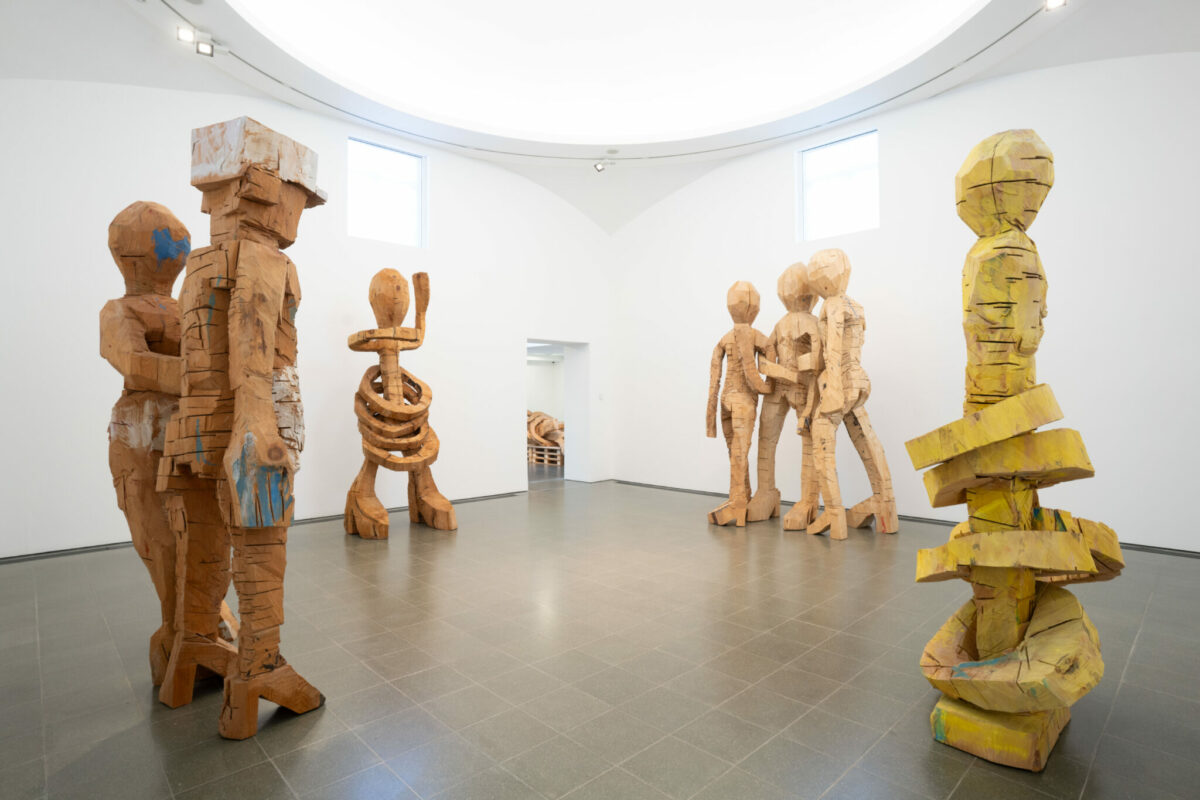
Georg Baselitz: Sculptures 2011-2015 features wooden sculptures which have never been exhibited before. These works are presented alongside related drawings rendered in pencil, pen and ink. The exhibition offers a unique opportunity to gain insights into Baselitz’s sculptural process, highlighting the latest developments of the artist’s practice during this period. Baselitz turned to sculpture in the 1980s, continuing to explore the tensions between the figurative and the abstract through his crude approximations of figures and body parts carved from wood. These wooden sculptures were not originally intended for public exhibition, as they were made as maquettes for bronze works.
Each one is carved from a single tree trunk, reduced by using power saws, axes and chisels. This method gives form to solid, impactful figures while maintaining the materiality of timber with distinctive incisions and notches on its surface. The accompanying drawings were made not as preparatory sketches for the maquettes, but during the sculpting phase.

Together, the drawings and maquettes highlight the synthesis of Baselitz’s two- and three-dimensional ways of making and explore the possibilities and impossibilities of translating from painting to sculpture, and from sculpture to drawings.
Serpentine is honoured to stage this incredible body of wooden works and related drawings, which have never been presented to the public before. Aligned with Serpentine’s ethos of spotlighting pioneering figures and following a tradition of presenting outstanding sculpture shows, we are thrilled to introduce these works to the public. The dialogue and resonance with contemporary artists and Serpentine’s history, shine a new light on Baselitz’s eminent and influential oeuvre.
Bettina Korek, CEO, Serpentine, and Hans Ulrich Obrist, Artistic Director, Serpentine,
Georg Baselitz: Sculptures 2011 – 2015, 5th October 2023 – 7th January 2024, Serpentine South and The Royal Parks
About the artist
With a career spanning over six decades, Georg Baselitz’s expansive body of work charts his contemplations on the complexities of representing the human figure in art. The artist’s oeuvre, which encompasses painting, sculpture, drawings and prints, is rooted in the context of the aftermath of the Second World War in Germany. Born in 1938 as Hans-Georg Kern, he fashioned his name from his birthplace, Deutschbaselitz, a small village in Saxony, eastern Germany. In the 1950s, he briefly undertook training in the officially sanctioned artistic style of Social Realism in Communist East Berlin, before moving to West Berlin, where he encountered abstract art. He ultimately rejected both positions to forge his own distinctive style centring on the human form, which Baselitz is known for inverting, or turning upside down, from 1969 onwards.
Georg Baselitz’s work has at times been met with controversy, first in the 1960s when he emerged with transgressive paintings and again in the 1980s with the advent of his sculptural practice, he has influenced generations of artists by offering a nuanced approach. His work grapples with the explosion of conceptual debates around national identity, aesthetic frameworks and the human condition since the second half of the 20th Century.
Georg Baselitz lives and works near Salzburg, Austria; at lake Ammersee, Germany; and Imperia, Italy. He has exhibited widely, including solo shows at Kunsthistorisches Museum, Vienna (2023); The Morgan Library & Museum, New York (2022) Museo di Palazzo Grimani, Venice (2022); Centre Pompidou, Musée national d’art moderne, Paris (2021); Gallerie dell’Accademia, Venice (2019); Fondation Beyeler, Basel, Switzerland, and Hirshhorn Museum and Sculpture Garden, Washington (2018); Städel Museum, Frankfurt (2016-17, travelling); Haus der Kunst, Munich (2014); Musée d’art moderne de la Ville de Paris (2011 and 1996); Gemäldegalerie Alte Meister der Staatlichen Kunstsammlung Dresden, Germany (2009); Staatliche Kunsthalle and Museum Frieder Burda Baden-Baden, Germany (2009); Museo d’Arte Contemporanea Donna Regina, Naples (2008); Royal Academy of Arts, London (2007); Louisiana Museum of Modern Art, Humlebaek, Denmark (2006); and Solomon R. Guggenheim Museum, New York (1995, travelling). Significant group exhibitions include ‘Baselitz, Richter, Polke, Kiefer — The Early Years of the Old Masters’, Staatsgalerie Stuttgart, Germany (2019, travelling); the 56th, 52nd, 39th Venice Biennale (2015, 2007, 1980); ‘Germany Divided, Baselitz and His Generation from the Duerckheim Collection’, British Museum, London (2014); Carnegie International, Pittsburgh (1995, 1988, 1985); ‘Bilderstreit’, Museum Ludwig / Rheinhallen, Cologne (1989); ‘A New Spirit in Painting’, Royal Academy of Arts, London (1981); and Documenta 7 and 5, Kassel, Germany (1982, 1972)
